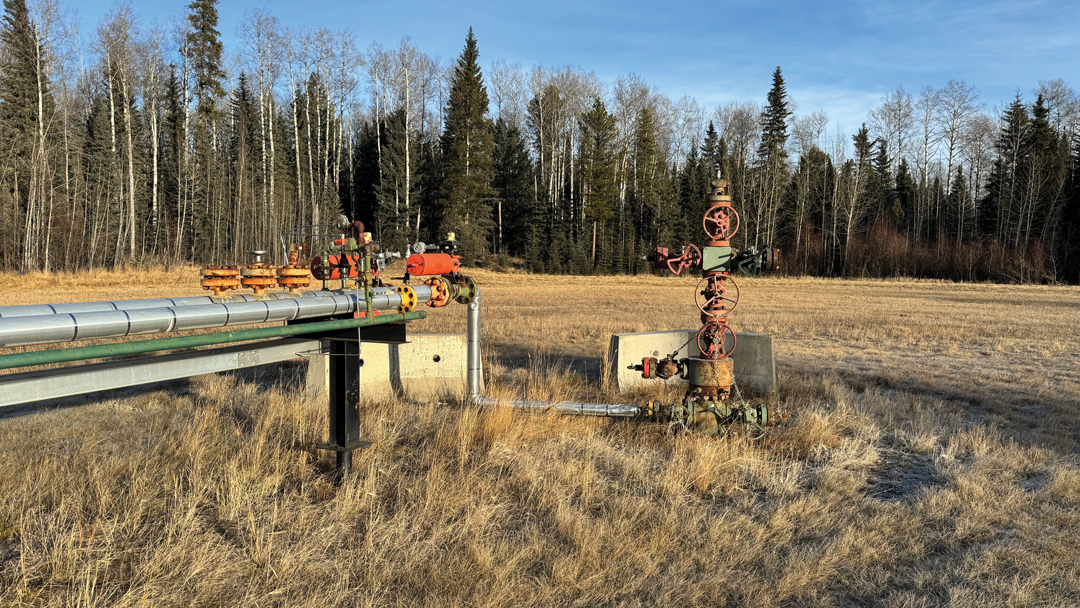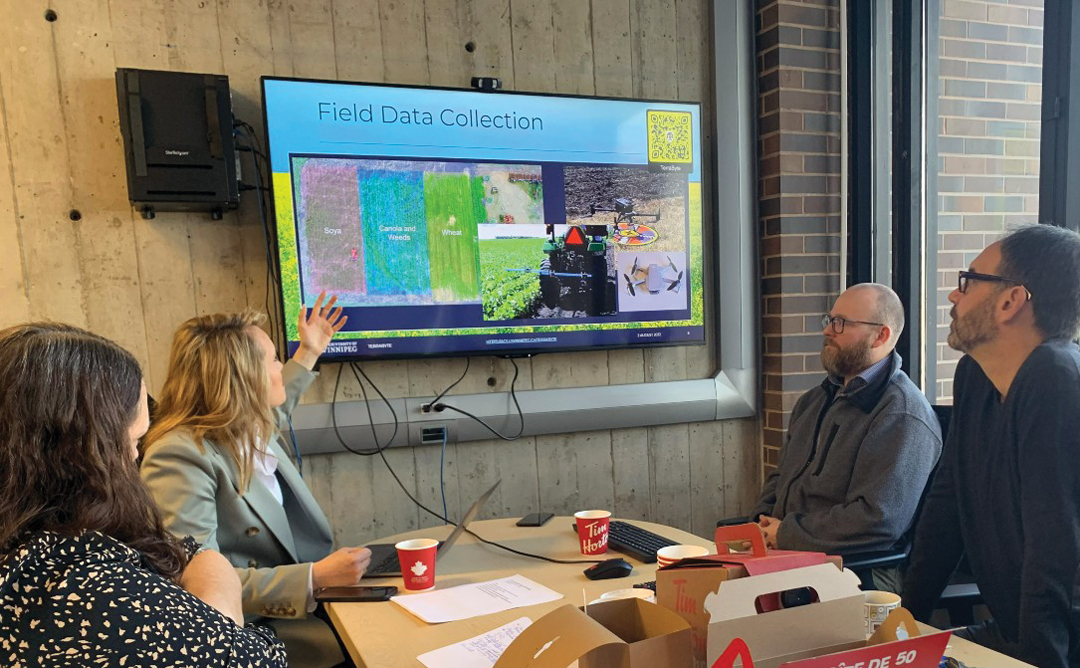MATURE ASSET STRATEGY RETHINK
BY GEOFF GEDDES • PHOTO COURTESY OF JASON WOODHEAD
In Alberta, mature oil and gas fields and wells continue to be abandoned at record speed. Often called mature assets, they continually look more and more like liabilities for many farmers. When an operator abandons a site, municipal taxes and surface leases go unpaid, which can be financially damaging for rural communities and landowners.
To tackle the issue, the provincial government recently held consultations on its Mature Asset Strategy (MAS) report published April 3. The meetings aimed to gather feedback from affected parties and forge a plan to deal with these defunct assets. Among those in attendance were petrochemical and green energy corporate stakeholders.
The sessions produced 21 recommendations the government views as supportive of economic growth and stability. Agriculture groups and municipalities, on the other hand, fear changes to the strategy may further burden landowners with site reclamation costs.
OUTFOXED?
“These consultations were like the fox designing the henhouse,” said Paul McLauchlin, reeve of Ponoka County and past president of the Rural Municipalities of Alberta. “We tried to discuss core issues of reclamation and unpaid surface leases and taxes, but the government had already chosen to preserve the status quo in favour of oil and gas operators.”
That status quo, according to McLauchlin, includes operators being allowed to abandon old wells with no repercussions, and even to establish new ones. Wells are often installed on farmland in exchange for monthly payments to the landowner. When operators fail to make payments, farmers and municipalities lose out.
“I have neighbours who haven’t been paid on their surface leases for eight years,” said McLaughlin. “Last year, the government paid about $30 million to landowners for lost lease revenue, but the total outstanding environmental liabilities are about $30 billion across the province. Maybe they’ll get around to me in three decades, but how does that help when I’m six feet under?”
As McLauchlin sees it, the problem is twofold. By not pursuing former operators for delinquent lease payments, the government forces taxpayers to foot the bill. Meanwhile, abandoned wells tie up arable land. The issue of who will bear those consequences is top of mind for farm groups.
WHEN THE SHIFT HITS THE FAN
“We are worried about the possible shifting of responsibility from lessees of the land to producers,” said Shannon Sereda, director, government relations, policy and markets for Alberta Grains. “Apart from missed lease payments, there are the issues of liability for that land and equipment, as well as reclamation costs. It’s not clear from the MAS recommendations whether those liabilities and costs will fall on farmers.”
Another concern is what Sereda sees as a history of favourable treatment for the oil and gas sector. “When operators default on taxes and government doesn’t hold them to account, it impacts municipalities that are already short on adequate funding from the Province,” she said. “If that inhibits the maintenance of rural roads and drainage ditches, things on which farmers rely, it’s a double whammy for farmers stuck with the old wells.”
Groups such as Alberta Grains also question related discussion around repurposing previously leased and abandoned farmland for energy uses such as lithium production and geothermal and solar energy projects. “I’m not sure landowners have been meaningfully engaged about the risks associated with these other energy sources,” said Sereda.
SURFACE TENSION
Some consider the MAS consultations a lost opportunity for meaningful engagement. “We were there with solutions, ready to work, but the outcome was a foregone conclusion,” said Bill Heidecker, president of the Alberta Surface Rights Federation and owner of Drylander Ranch in east-central Alberta. “Instead of being beneficial, the talks just harmed the relationship between industry and landowners even further.”
Without that strong connection, future development may be put at risk, as farmers will be reluctant to lease out their land. “Landowners have insights and solutions, so help us help you,” said Heidecker. “Stop beating us up. If this is how government and industry are going to play it, then we’re done, we’re out.”
An additional participant in the talks, the Land and Property Rights Tribunal (LPRT) is an independent body established by the Province to provide quasi-judicial and alternative dispute resolution. “I thought the moderator was very brave,” said Mike Hartfield, executive director of the tribunal. “He said he wanted to shine light in dark places, and he certainly did that; he got people talking.”
BEYOND THE SURFACE
One of the tribunal’s key functions is mediation of surface rights disputes. In Alberta, operators have assured access to private and Crown land to develop energy sources, for which landowners are entitled to fair compensation. “Usually, the two parties come to an agreement,” said Hartfield. “When they can’t, we try to help them bridge the gap. If all else fails, we go to a hearing.”
If an operator defaults on lease payments, the landowner can apply to the tribunal under Section 36 of the Surface Rights Act to recover this money. “For the longest time, we only had a few hundred applications a year,” said Hartfield. “Thanks to the dip in commodity prices in 2016, and again in 2020, we now get thousands.”
While Hartfield understands some of the points raised by critics of the sessions, not all of them resonate. “I heard a lot of reminiscing about the old days, when parties to a dispute would meet with the tribunal in a pickup on a farmer’s land,” said Hartfield. “Some people asked why we can’t go back to that, but we received 6,518 applications to recover lost lease revenue in 2024 alone. It would take years to deal with them the old way.” Critics also complain too many lawyers are involved in dispute settlement. “We’re a tribunal,” countered Hartfield. “We can’t tell people to not bring lawyers.”
As well, some wanted to see more farming or ranching experience among LPRT members, something the tribunal is working to address. “Twenty per cent of our current members have that experience, but we can always do better,” said Hartfield.
Of the 21 recommendations from the MAS sessions, only two applied to the tribunal, and Hartfield said they both reflect subjects covered in the talks. As for the other 19, which include points to maximize operational efficiency and commit to stakeholder collaboration, there is some skepticism afoot. “I’ve been an environmental scientist for 30 years, and I’ve never seen anything that vague,” said McLauchlin of the recommendations. “It looked like a book report written by ChatGPT. There are some good points, but no firm details or conclusions. Industry needs to pick their top three issues and come to the table openly and frankly for discussions.”
A WEIGHTING GAME
As a key player in the controversy, the government carries much weight, and some want to see it used more often. “Don’t allow companies to operate and not pay their bills or tend to the sites when they stop using them,” said McLauchlin. “Operators, you’re borrowing my land, and in return, you promise to give me money and clean up when you leave. It is shocking that the government is letting them renege on their commitments.”
The recommendations from the MAS meetings have not yet been formally accepted by the Alberta government, and it’s unclear what comes next. Whatever happens, McLauchlin has some frank advice. “The government does not have your back; don’t think they will fix this. Dad always told me that the only person who will take care of you is you.”







Comments